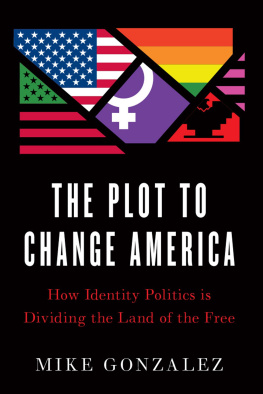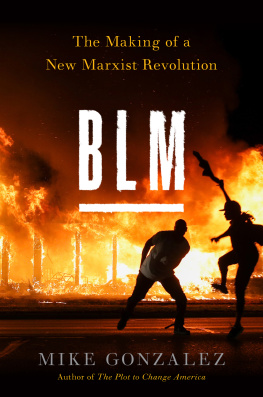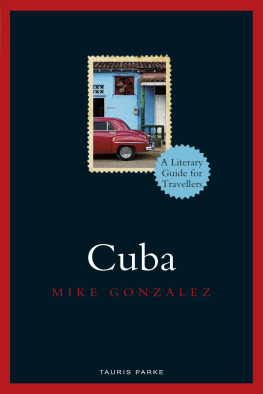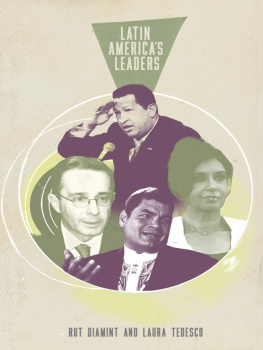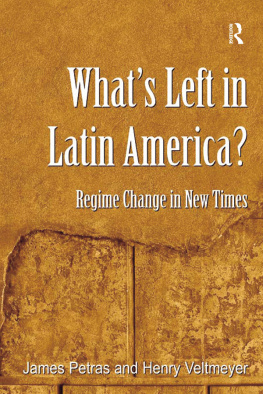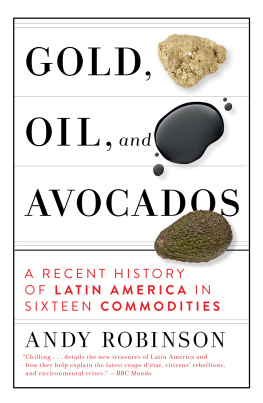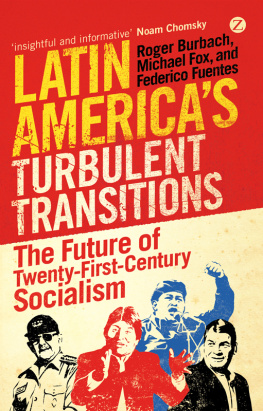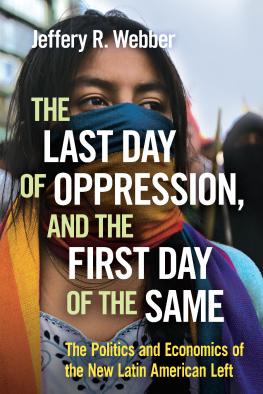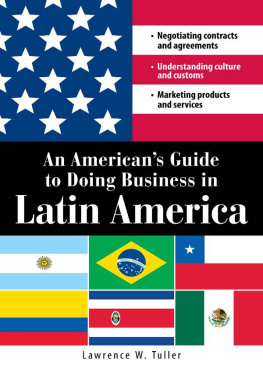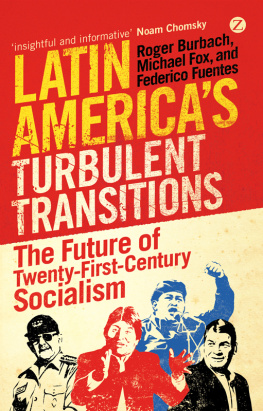Contents
Guide
The Ebb of the Pink Tide
The Ebb of the Pink Tide
The Decline of the Left in
Latin America
Mike Gonzalez

First published 2019 by Pluto Press
345 Archway Road, London N6 5AA
www.plutobooks.com
Copyright Mike Gonzalez 2019
The right of Mike Gonzalez to be identified as the author of this work has been asserted by him in accordance with the Copyright, Designs and Patents Act 1988.
British Library Cataloguing in Publication Data
A catalogue record for this book is available from the British Library
ISBN 978 0 7453 9997 3 Hardback
ISBN 978 0 7453 9996 6 Paperback
ISBN 978 1 7868 0339 9 PDF eBook
ISBN 978 1 7868 0341 2 Kindle eBook
ISBN 978 1 7868 0340 5 EPUB eBook
This book is printed on paper suitable for recycling and made from fully managed and sustained forest sources. Logging, pulping and manufacturing processes are expected to conform to the environmental standards of the country of origin.
Typeset by Riverside Publishing Solutions, Salisbury, United Kingdom
Simultaneously printed in the United Kingdom and United States of America
Contents
For Nella, who lived it all
Introduction
Neo-liberalism on the attack
Nautical metaphors can be risky; comparing social processes to the movement of the tides might suggest that the rise of Latin Americas left governments, and their subsequent crises, belong to a natural cycle. It would be an absurdly inaccurate explanation for the complex and profound political developments with which this book is concerned. Indeed, it seems to me that the term pink tide has an ironic, critical implication. It was first coined in 2006 by the New York Times correspondent in Montevideo, Frank Lehrer, in reference to the government of Tabar Vzquez in Uruguay, with more than a hint of mockery as if the election of left governments in several Latin American countries was all sound and fury, signifying nothing. Diane Raby subsequently attributed the phrase to Hugo Chvez, which is an error, but one intended to invest it with a more positive meaning. But the reality is that it has now been generally adopted as an analytical tool in the discussion and interpretation of the experience of left governments in Latin America, which may prove to be unhelpful.
The process begins, by common consent, with the election of Hugo Chvez to the Venezuelan presidency in 1998. Reflecting back on that moment from the perspective of 2018 is a demoralising experience. Hugo Chvez died in bizarre circumstances in 2013, to be succeeded by Nicols Maduro who has overseen what is undeniably the catastrophic collapse of the Venezuelan economy, and whose government represents, to me at least, a grotesque parody of the society promised by the Bolivarian revolution. Rafael Correa, a relatively late recruit to the Bolivarian project, has left the presidency of Ecuador to which he was elected in 2007, denouncing many of the social movements that carried him to power. Bolivia continues under a government led by Evo Morales, a figure as representative of the Bolivarian project as Chvez himself; but the grassroots rebellion that carried him triumphantly to the Casa Quemada in La Paz has fragmented, with many of its components distancing themselves from Morales. In Argentina, the administrations of Nstor and later Cristina Kirchner, inheritors of the Peronist mantle, promised beginning in 2003 a progressive project in the wake of the mass protests embraced by the Argentinazo of December 2001. It ended with an election in 2015 which brought to power Mauricio Macri, a trenchant advocate of neoliberal strategies which he is imposing on the country with relentless determination. And in Nicaragua, as the 40th anniversary of the 1979 Sandinista revolution approaches, Sandinista police and military are firing live bullets at demonstrators protesting at austerity policies imposed by Daniel Ortega, the leader of the Sandinista revolution now reborn as an authoritarian ruler. He has delivered the country into the hands of Chinese multinationals intending to build the transoceanic canal which has regularly re-emerged as a dream project for multinational capital.
There was nothing predestined or inevitable about these developments; no simple movement of the tides. The corruption and centralisation of power that have accompanied them are not attributable to human nature or the character of certain leaders. There are features common to each national experience above all the turn back towards extractivism. There are also elements which have to do with the specific history of each nation and its state formation. And in every case the particular characteristics of its bourgeoisie, the history of the class struggle and its many and different manifestations, interspersed with issues of race and tradition, and with the internal contradictions within the left, combined in different ways. It is important to identify these particularities, as well as the impact and influence of external forces, in particular the U.S. government and multinational capital, a category which today must include China and Russia as material actors in Latin America. The concept of a pink tide, therefore, can identify the common framing conditions, but the specificity of each experience alone can allow us to discuss how to overcome the present circumstances, and continue the process of social transformation whose first steps were marked by the early flow of the pink tide.
It is instructive to cast our mind back to the moment of Chvezs election to the presidency, or perhaps more significantly to the Cochabamba Water War that inaugurated the twenty-first century. Both marked an ending and a beginning, or at the very least a turning point in global politics, though that would only become clear after the event.
It was the ending of a decade which had begun with the collapse of the Soviet bloc and the final demise and exposure of what was left of the Stalinist project, whose implications and effects would resonate through the post-1989 decade. It was not, as Francis Fukuyama alleged, the end of history but the uncertain and tentative beginning of a new and different history whose polarities were multiple and which could no longer be defined, however falsely, in cold war terms. The 1990s were a decade in which a newly confident and ruthless capitalism continued to extend its reach across the planet leaving devastation it as it went. Neo-liberalism did set out to impose its model on Latin America, through its financial agencies the International Monetary Fund (IMF) in particular subverting national states and setting out to integrate the individual economies into a regional and ultimately global project.
This neo-liberal assault was variously concealed behind notions of austerity, structural adjustment and the anti-poverty programme. For the region, the net result of the 1990s, the decade of globalisation, was a dramatic rise in levels of poverty, the displacement of millions and the weakening of the national state, as public resources were privatised. The signposts along this new route included the Venezuelan urban rising known as the Caracazo, the bargain sale of Argentinas public assets by Peronist president Carlos Menem in 1990, the dollarisation of the Ecuadorean economy and the declaration of the North American Free Trade Area (NAFTA) in 1994, whose triumphalist inauguration was overshadowed by an insurrection in the southern Mexican state of Chiapas led by the Zapatista National Liberation Army (EZLN).


